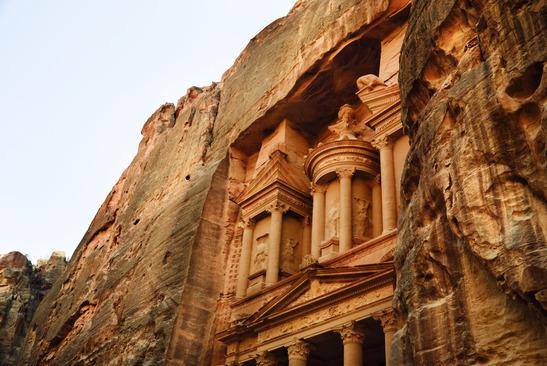Claudia, this one’s for you. When you asked me this question initially, I responded “probably the Sumerians or Egyptians” and admitted that this was a complete shot in the dark. As a curious person myself, I welcome questions from patients and do my best to research them when I don’t have a satisfactory answer. If the findings are interesting enough to me, or enough people inquire about the same topic, some of these questions make their way into my dental blog. Today’s question is definitely not one of the high volume topics. Nobody besides my friend Claudia has ever asked me about root canal history—that’s a topic most like to avoid—but the answer to her question was pretty fascinating. Here’s what I can tell you about the earliest root canal that’s ever been found:
In 1985 archaeologists found the remains of a Nabataean* soldier in Israel’s Negev desert whose tooth appears to have undergone endodontic treatment. While examining the soldier’s skull, an archaeologist noticed a green stain on a front tooth. X-rays revealed a small bronze wire inside the nerve space of the tooth. Dental anthropologists (a profession I didn’t know existed) suspect that, much like modern root canals, the post was inserted to deaden the nerve inside the tooth and relieve pain. Finding this soldier’s tooth was a pretty big deal in the world of archaeology. Prior to the discovery, the earliest root canals found came from the 1600s. This root canal dates from the 2nd or 3rd century B.C. That’s a huge gap in knowledge!
The location of the discovered root canal was also curious. Ancient Jews apparently didn’t practice dentistry until around A.D. 200. We guess this is the case because ancient Jews tended to argue about everything; if it was around, you can be sure that there were rabbinical scholars arguing and writing about it. In the case of dentistry, Jewish texts dating from A.D. 200 show them arguing about whether it was proper for a woman to go out on the Sabbath with a gold dental work. This was at least 400 years after our Nabataean soldier lived though. Because of this, archaeologists suspect that the soldier received his dental work in Rome. Rome was doing crowns and bridges at that time, and even before the Romans came, the Etruscans were doing some elaborate dental work in that part of the world. It logically follows that their dental knowledge was probably advanced enough to treat tooth pain with root canal-type procedures.
As for my initial guess of Sumerians and Egyptians, I was dead wrong. The advancement of dental technology in different parts of the ancient world was highly variable. There are Sumerian texts dated at about 5000 B.C. and Egyptian papers from around 3700 B.C. referencing tooth disease, but apparently the dentistry in these cultures didn’t go anywhere significant from there. In contrast, the Romans and Etruscans were quite advanced, as I stated above, as were the Chinese and Indian cultures. Regardless of whether they were available or not, I’d bet that
So next time you have a painful tooth that can only be fixed with a root canal, have a little awe and gratitude for all the years it took for that technology to advance to where it is today. We live in a wonderful time.
-Nicolas K. Young, DMD
*You’ve heard of the Nabataeans before. They were the ancient Arabs responsible for a lot of the cool sandstone monuments and architecture in the Holy Land, such as Petra, the resting place of the Holy Grail in “Indiana Jones and the Last Crusade.”










